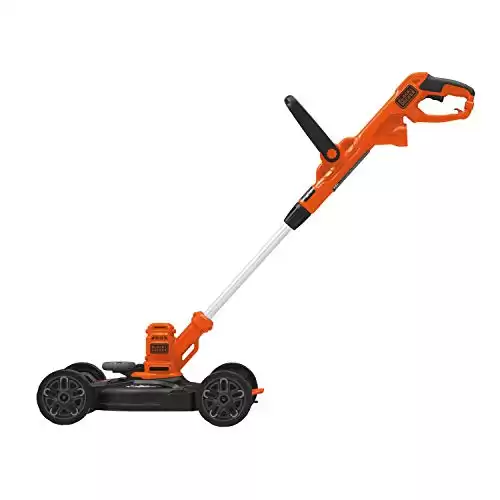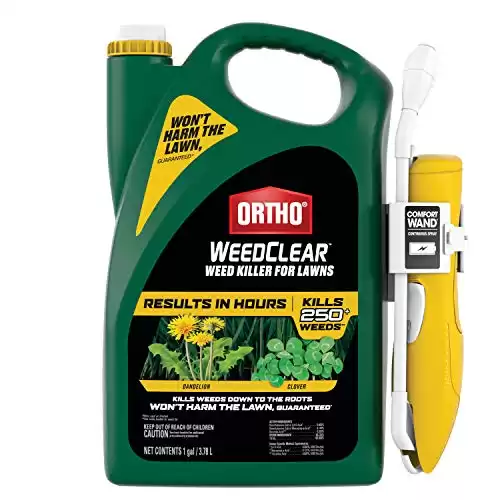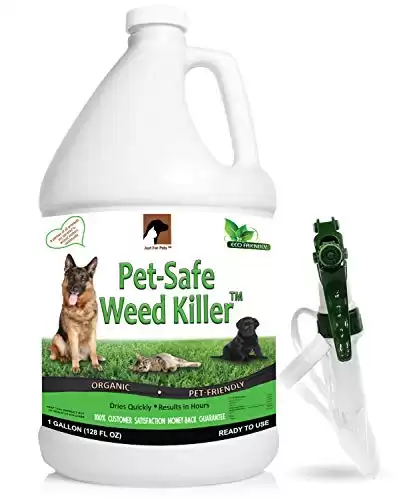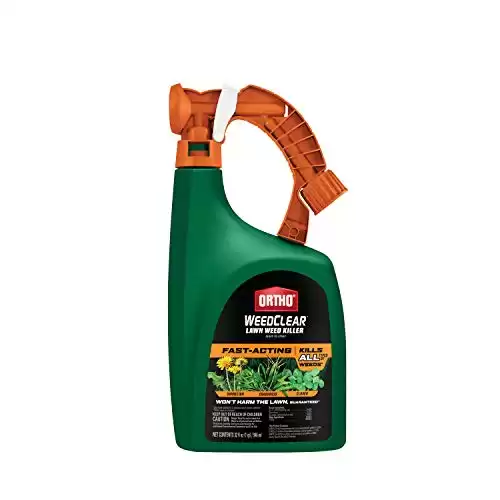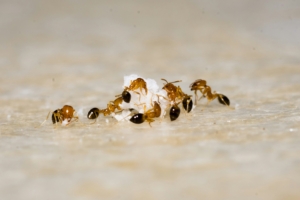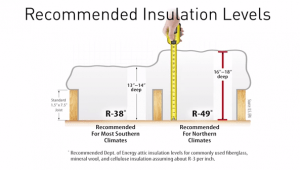Lawn Weeds: Strategies for
Dealing with Pesky Lawn Invaders
Maintaining a lush, healthy lawn can be a homeowner’s pride, but it often comes with the constant battle against unwanted invaders – weeds. These resilient plants have a knack for popping up where they’re least wanted, competing with your grass for water, sunlight, and nutrients. However, with the right strategies, you can effectively tackle these pesky lawn invaders and restore your yard to its former glory. In this blog post, we’ll explore some tried-and-true techniques to help you win the weed wars and achieve a pristine, weed-free lawn.
Types of Lawn Weeds
Before launching an attack, let’s get to know your adversaries.
Familiarizing yourself with common lawn weeds in your area, such as dandelions, crabgrass, clover, and chickweed, is essential for effective lawn care. Each weed has unique growth patterns, life cycles, and preferred conditions, and understanding these aspects will enable you to devise targeted strategies to combat them.
For example, dandelions are perennial weeds that spread through seeds carried by the wind. They have deep taproots, making complete removal challenging. Applying pre-emergent herbicides in early spring or using post-emergent herbicides when dandelions are actively growing can help control them. Regularly mowing high to prevent dandelion seed heads from forming is also beneficial.
Crabgrass, an annual weed, germinates from seeds in warm soil. It thrives in bare or thin areas of the lawn and can quickly spread. Applying pre-emergent herbicides before crabgrass germination season, typically in early spring, is crucial for prevention. Post-emergent herbicides can be used for existing crabgrass, but early control is more effective.
Clover is a common broadleaf weed with three-leaf clusters. It prefers low-nitrogen soil and can indicate underlying soil deficiencies. Improving soil fertility and pH levels through proper fertilization and soil amendments can discourage clover growth. Broadleaf herbicides specifically targeting clover can also be used as needed.
Chickweed, another common broadleaf weed, thrives in cool, moist conditions. Regular mowing, proper watering practices, and improving soil drainage can help control its growth. Applying selective herbicides formulated for broadleaf weeds can be effective in managing chickweed.
By understanding the growth habits, life cycles, and environmental preferences of these common weeds, you can develop a proactive approach to weed control. Combining preventive measures like proper lawn care practices, such as regular mowing, watering, and fertilization, with targeted herbicide applications when necessary, will help you maintain a healthy, weed-free lawn. Additionally, implementing good cultural practices such as overseeding, maintaining proper turf density, and minimizing bare spots will make it more difficult for weeds to establish and thrive in your lawn.
Maintain a healthy lawn:
A well-maintained lawn is your first line of defense against weeds. Healthy grass naturally outcompetes weeds, making it harder for them to take root and thrive. Follow these practices to promote a strong lawn:
a. Regular mowing: Keep your grass at the recommended height for its species, as taller grass shades out weeds and inhibits their growth.
Regular mowing is an important aspect of lawn maintenance, and keeping your grass at the recommended height for its species offers numerous benefits. One of the key advantages is that taller grass shades out weeds and inhibits their growth.
By maintaining the proper mowing height, you create a denser turf that helps block sunlight from reaching weed seeds and seedlings. This shading effect prevents weeds from receiving the necessary light energy for photosynthesis, weakening their growth and limiting their ability to compete with the grass. Taller grass also helps to crowd out and smother weed seedlings, reducing their chances of establishing a foothold in your lawn.
It’s essential to know the recommended mowing height for the specific grass species in your lawn. Different types of grass have varying optimal heights to ensure optimal health and weed suppression. For example, cool-season grasses like Kentucky bluegrass and tall fescue generally thrive when mowed to a height of around 2.5 to 3.5 inches. Warm-season grasses such as Bermuda grass and Zoysia grass are often maintained at lower heights, ranging from 1 to 2.5 inches.
|
$229.99
|
$89.00
|
N/A
|
Here are some common types of grass and their recommended mowing heights:
1. Kentucky Bluegrass (Cool-Season Grass):
– Recommended Height: 2.5 to 3.5 inches
2. Tall Fescue (Cool-Season Grass):
– Recommended Height: 2.5 to 3.5 inches
3. Fine Fescue (Cool-Season Grass):
– Recommended Height: 2.5 to 3.5 inches
4. Perennial Ryegrass (Cool-Season Grass):
– Recommended Height: 2.5 to 3.5 inches
5. Bermuda Grass (Warm-Season Grass):
– Recommended Height: 1 to 2.5 inches
6. Zoysia Grass (Warm-Season Grass):
– Recommended Height: 1 to 2.5 inches
7. St. Augustine Grass (Warm-Season Grass):
– Recommended Height: 2.5 to 4 inches
8. Centipede Grass (Warm-Season Grass):
– Recommended Height: 1.5 to 2.5 inches
9. Bahiagrass (Warm-Season Grass):
– Recommended Height: 2.5 to 4 inches
10. Buffalo Grass (Warm-Season Grass):
– Recommended Height: 2 to 3 inches
It’s important to note that the recommended mowing heights may vary slightly depending on factors such as local climate, soil conditions, and personal preferences. It’s a good practice to consult local lawn care resources or university extension services for specific recommendations tailored to your region and grass type.
To achieve the benefits of shading out weeds through regular mowing, here are some guidelines:
1. Adjust your mower to the appropriate cutting height for your grass species.
2. Avoid cutting more than one-third of the grass blade length at a time to prevent stress on the grass and maintain overall health.
3. Mow regularly to ensure you’re not removing excessive amounts of grass at once.
4. Avoid mowing when the grass is wet, as it can lead to uneven cuts and clumping of the clippings, which can hinder sunlight penetration.
By adhering to the recommended mowing height and maintaining a regular mowing schedule, you promote a dense, healthy lawn that outcompetes weeds. This proactive approach, combined with other lawn care practices like proper watering, fertilization, and weed control, will help create an environment that minimizes weed growth and contributes to a vibrant and weed-free lawn.
b. Adequate watering: Water deeply and infrequently to encourage deep root growth in your grass, making it difficult for weeds to establish themselves.
c. Proper fertilization: Apply a balanced fertilizer according to the needs of your grass to promote vigorous growth and resilience.
Lawn Weeds Pre-emergent herbicides:
Prevention is key when dealing with weeds. Pre-emergent herbicides create a barrier in the soil that inhibits weed seeds from germinating. Apply these herbicides during the appropriate season, typically in early spring or fall, before weed seeds have a chance to sprout. Follow the product instructions carefully to ensure safe and effective use.
Lawn Weeds Spot treatments:
For existing weeds in your lawn, spot treatments can be highly effective. Selective herbicides designed to target specific types of weeds allow you to eliminate them without harming your grass. Use a sprayer or a handheld applicator to target individual weeds or patches, ensuring that you follow the application instructions and avoid spraying on windy days to prevent drift.
|
|
$29.95
|
|
Manual removal of Lawn Weeds:
Sometimes, a hands-on approach is necessary for stubborn weeds or when you prefer a chemical-free solution. Grab a weeding tool, such as a dandelion digger or a weed-pulling tool, and carefully extract weeds from the roots. It’s important to remove the entire root system to prevent regrowth. Regularly inspect your lawn and promptly address any new weed sightings to prevent them from spreading.
For manual removal of lawn weeds, you’ll need the following tools:
1. Garden Gloves: Protect your hands from potential thorns, prickles, or irritants while handling weeds.
2. Hand Trowel: A small handheld digging tool with a pointed blade, ideal for loosening soil and digging out individual weeds.
3. Hand Fork: A small handheld tool with multiple tines, useful for loosening soil around weeds and extracting them from the ground.
4. Weed Puller/Weeder: A specialized tool designed to remove weeds from the root, often with a lever-like mechanism for easy extraction.
5. Weed Knife/Weeding Tool: A long, narrow-bladed tool used for slicing through the soil and cutting weeds at their base, particularly effective for tap-rooted weeds.
6. Garden Hoe: A versatile tool with a flat blade that can be used to slice and remove weeds just below the soil surface.
7. Garden Rake: Helps to level and smooth the soil after weed removal, allowing for better grass growth.
8. Weed Bag or Bucket: Use a bag or bucket to collect and dispose of the pulled weeds, preventing them from reseeding or spreading.
9. Kneeling Pad: Provides comfort and cushioning for your knees while working close to the ground.
10. Wheelbarrow or Garden Cart: Useful for transporting tools, weeds, and other materials around your lawn.
Mulching and landscaping:
Prevent weeds from taking hold in flower beds and garden areas by applying a layer of organic mulch, such as wood chips or straw. Mulch acts as a natural weed barrier, suppressing weed growth while retaining moisture and improving soil health. Additionally, strategic landscaping and dense planting can create competition for weeds, reducing their chances of flourishing.
Regular maintenance:
Consistency is key in the weed wars. Make lawn maintenance a regular part of your routine to stay ahead of weeds. Regularly mow, water, and inspect your lawn for any signs of weed growth. Promptly address weed issues as soon as they arise to prevent them from spreading and becoming a more significant problem.
Conclusion: Lawn Weeds Seasonal Maintenance
While weeds may seem like an inevitable nuisance, armed with the right strategies, you can effectively combat them and maintain a beautiful, weed-free lawn. By identifying the types of weeds you’re dealing with, maintaining a healthy lawn, employing pre-emergent herbicides, using spot treatments or manual removal, employing mulching and landscaping techniques, and staying consistent with regular maintenance, you’ll be well on your way to winning the weed wars. Remember, patience and persistence are crucial in achieving and preserving a healthy, weed-free lawn that will be the envy of the neighborhood.



